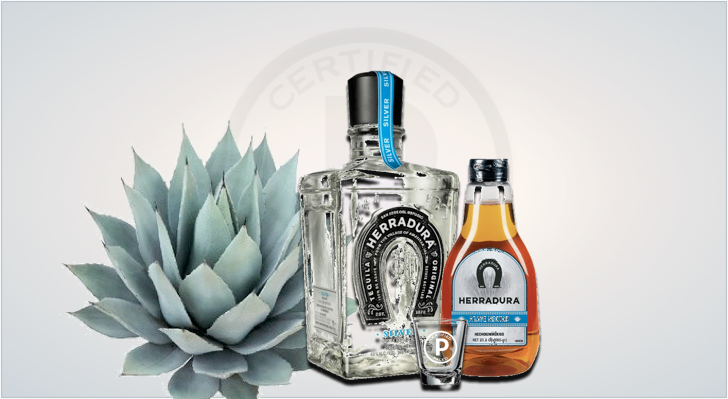Is Agave Paleo? A Deep Dive into Agave Nectar, Aguamiel, and Tequila

The Agave Plant: Desert Sweetness with a Debate
Agave is a desert succulent, not a grain or legume, and its sap-based products are derived directly from the plant. In its whole, raw form, agave certainly fits within the Paleo framework. The controversy begins with agave nectar, a modern sweetener extracted and processed from agave sap. While its low glycemic index and high inulin (fructooligosaccharide) content have earned it favor among some health-conscious consumers, the Paleo community remains divided on whether agave nectar qualifies as truly Paleo. This guide reviews Aguamiel, Agave Nectar, Miel de Agave, and Tequila, clarifying how each fits into the Paleo Foundation’s Certified Paleo Standards.
What Is Aguamiel?
Aguamiel, or “honey water,” is the raw sap collected from the agave or maguey plant. Traditionally, it has been consumed by indigenous peoples as a natural, nutrient-rich beverage. When boiled down to reduce water content, it takes on a syrup-like consistency—essentially, the “maple syrup” of the agave plant.
Is Aguamiel Paleo? Yes. It is naturally derived, minimally processed, and consistent with Paleo principles.
What Is Agave Nectar?
Agave nectar (or agave syrup) is a sweetener developed in the early 1990s. Although derived from the agave plant, it requires multiple rounds of industrial processing to achieve its familiar amber color and syrupy texture.
How Agave Nectar Is Made
-
The juice is extracted from the agave plant.
-
The juice passes through multiple centrifuges to remove impurities and concentrate sugars.
-
Enzymes are introduced to convert the native sugars into fructose and dextrose.
-
The syrup is further filtered, heated, and evaporated to achieve a 50–90% fructose content.
-
Finally, it is bottled and marketed as a “natural sweetener”.
Paleo Assessment
While agave nectar is plant-derived and low on the glycemic index, its high fructose concentration and extensive processing are major concerns for Paleo purists. In fact, agave nectar can contain as much or more fructose than high-fructose corn syrup (HFCS).
For individuals with fructose malabsorption, agave nectar may cause bloating or gastrointestinal discomfort. Fructose malabsorption occurs when the small intestine lacks sufficient transporters to absorb fructose efficiently.
Paleo Verdict
| Question | Status | Reason |
|---|---|---|
| Can Agave Nectar be Certified Paleo? | ❌ No | Excessive processing and high fructose content. |
| Can Agave Nectar be Paleo Friendly? | ✅ Yes | Plant origin and comparable fructose ratio to honey and dried fruits. |
Agave nectar can be considered Paleo-friendly due to its natural source, but not Certified Paleo because of its enzymatic modification and refining steps, and overwhelmingly negative view by the paleo community at large.
Why Agave Nectar Remains Controversial
Even though the fructose concentration of agave nectar is similar to that of honey or dried mango (both accepted in the Paleo community), the method of processing creates a distinction. Heating and enzyme exposure alter sugar composition, raising concerns over metabolic effects and potential insulin resistance. While some enzymes are natural (bees use enzymes to make honey), the industrial-scale refinement of agave nectar diverges from Paleo food preparation principles.
Bonus Section: Tequila and the Paleo Lifestyle
Because tequila originates from the agave plant, it naturally enters the Paleo conversation. Tequila production is less processed than agave nectar and relies on fermentation and distillation rather than enzymatic sugar conversion.
How Tequila Is Made
-
Agave plants are harvested by jimadores using traditional methods.
-
The agave hearts are baked to convert complex carbohydrates into fermentable sugars.
-
The cooked agave is mashed and the juice is collected.
-
The juice is fermented in wooden barrels or steel vats, then distilled into tequila.
This craft-based process preserves the agricultural origin of the plant and involves minimal chemical alteration.
Paleo Verdict for Tequila
| Question | Status | Reason |
|---|---|---|
| Is Tequila Paleo? | ✅ Yes | Derived from a natural plant source through fermentation and distillation. |
| Can Tequila be Certified Paleo? | ✅ Yes | Meets Paleo Foundation standards for purity and minimal processing. |
Key Takeaways
-
Aguamiel is raw, minimally processed, and Paleo Approved.
-
Agave Nectar is heavily processed, high in fructose, and not Certified Paleo.
-
Tequila, produced via fermentation and distillation, is eligible for the Certified Paleo program when derived from 100% blue agave.
-
As with any sweetener or alcohol, moderation aligns best with the Paleo ethos of whole, unprocessed living.
